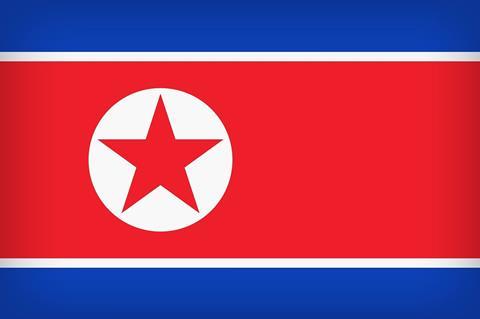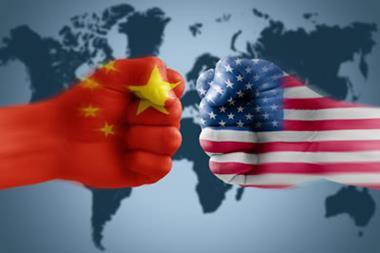North Korea’s combination of cloak-and-dagger unpredictability and positioning makes it a presence that is at best disquieting, at worst deeply alarming for risk managers in APAC and beyond.
A population under 26 million, scarce exports, negligible global power, and a GDP of $28bn – less than Iceland and marginally more than Malta and Jamaica – the numbers would suggest North Korea is an unremarkable nation.
Within a risk landscape of ongoing conflict in Europe, climate change and global economic instability, risk managers could view the Hermit Kingdom as an auxiliary concern.

However, despite the diminutive nature of its power on a global scale and its whimpering economy, the combination of nuclear ambitions, provocative behaviour, human rights concerns, and regional implications contribute to a deeply cautious approach by many towards DPRK.
North Korea is uniquely positioned among the world’s Eastern superpowers. It shares borders with three major players – technologically advanced neighbour South Korea, the world’s largest economy of China, and global heavyweight Russia.
”For risk managers with operations in APAC and beyond, North Korea matters.”
Just across the East Sea is Japan, the world’s third-largest economy.
This makes the Korean Peninsula, an area of conflict and battleground for Eastern power since 57 BCE, a deeply notable strategic position in Northeast Asia.
And so, its combination of its cloak-and-dagger unpredictability and germane positioning means that for risk managers with operations in APAC and beyond, North Korea matters.
Missile tests
When it comes to the noises emanating from North Korea today, reports often focus on a pattern of continued military development, despite around half of the nation living in poverty.
Jenny Town, senior fellow at the Stimson Center and the director of Stimson’s 38 North Program, which focuses on North Korea analysis, says the country is making rapid progress against its weapons of mass destruction (WMD) development goals set at its 8th Party Congress in January 2021.
“While the beginning of 2022 was met with back-to-back missile tests as part of a more or less ‘normal’ weapons development cycle, the nature of North Korea’s WMD activities shifted in the second half of the year,” says Town.
“As the US and South Korea resumed long-stalled large-scale, live-fire joint military exercises, running such exercises back-to-back for months on end, Pyongyang began responding with new missile deployment and operational drills of its own.”
”The two sides are essentially caught in an escalation cycle with no current channels of communication to gauge how the situation is evolving.”
However, Town says these reciprocal exercises were conducted first and announced as drills only after the fact, making the risk of misperception and miscalculation higher than necessary at a time when tensions were rising.
“Moreover, the types and conduct of ballistic missile tests since last fall are more political in nature, with Kim Jong Un in attendance, demonstrating advancements in its strategic capabilities including new larger ICBMs [intercontinental ballistic missiles] and a new rudimentary solid ICBM capability,” she says.
“US and South Korean responses to both the tests and drills has been to put forward more muscular rhetoric, conduct reciprocal drills and exercises to demonstrate capabilities and resolve, and to show deepening cooperation as an extended deterrence.
“While these are reasonable responses, the two sides are essentially caught in an escalation cycle with no current channels of communication to gauge how the situation is evolving.”
Keeping it in the family
Kenneth Katzman, senior advisor with The Soufan Group, says there are a number of developments of significance with respect to North Korea and the ballistic missiles tests have alarmed the US and Japan, in particular.
“In addition, Kim Jong Un appears – emphasis on appears – to be unveiling his teenage daughter as a likely successor to him to keep power within the Kim line. He had the daughter accompany him to high-profile events including missile tests and military-led ceremonies, among other functions, raising her profile dramatically.”
“There are also reports that North Korea has provided some military equipment to Russia”
If Kim Jong Un’s daughter were to rise to power, it would likely see the continuation of the regime’s policies, ensuring that nuclear weapons and proliferation risks remain.
“There are also reports that North Korea has provided some military equipment to Russia in response to Russia’s urgent need for ammunition and other supplies for the Ukraine war, which has proved far more difficult than Russian planners had imagined,” says Katzman.
“These supplies could put North Korea in line for even harsher US and European sanctions and diplomatic isolation.”
The future of the north
A bewildering and unpredictable nation to chart, North Korea appears increasingly weakened by dire economics, limited technological advancement and demographic challenges.
Despite the distant hope that younger North Koreans can bring about change, many of its upcoming development aims will continue to trouble risk managers.
“North Korea is moving closer to launching its first reconnaissance satellite and may first demonstrate a solid ICBM at range, in advance of that satellite launch to give it greater confidence in its launch capabilities,” says Town.
“It also seems to be edging closer to starting up its experimental light water reactor, which would increase its plutonium production capacity to better meet its goals of increasing its tactical nuclear weapons arsenal over time.”
”Many of North Korea’s its upcoming development aims will continue to trouble risk managers.”
Town says this is all happening amid growing US-China competition, especially over Taiwan, making cooperative efforts to modulate Pyongyang’s WMD development unlikely in the near future.
“In the meantime, the US-South Korea alliance will work to implement various new levels of cooperation and consultation on extended deterrence, including consultation on nuclear policy, increasing the rotation of US strategic assets to Korea, conducting new types of exercises that include nuclear use scenarios, and even developing new plans for South Korean conventional support for potential US nuclear operations on the Korean Peninsula.
“As these steps begin to be operationalised, it is likely to further agitate inter-Korean relations and create tensions in South Korea-China relations as well, especially when coupled with trends in Indo-Pacific economic cooperation,” she added.
”No matter who is elected in the US, any major initiatives on North Korea will likely have to wait until an end to the Ukraine war”
For Katzman, he expects no change in US policy towards North Korea, continuing through to at least the US election in 2024.
“The Biden administration does not view engaging North Korea in an effort to obtain a nuclear or missile deal to be a priority. The key unknown is whether Kim Jong Un decides to conduct another nuclear test in an effort to force North Korea onto the Biden administration’s agenda,” he says.
Katzman continues that the post-US election period will provide the opportunity for the Biden administration or a Republican president to evaluate whether it is worthwhile making another effort to obtain a nuclear deal with North Korea.
“However, no matter who is elected in the US, any major initiatives on North Korea will likely have to wait until an end to the Ukraine war, which is a major foreign policy crisis that is occupying a great deal of the US foreign policy agenda,” he adds.
What risk managers need to monitor
For global risk managers, there are several key areas where focus must remain to effectively assess and mitigate risks from the Hermit Nation.
1) GEOPOLITICAL TENSIONS
The ongoing geopolitical tensions surrounding North Korea continue to pose risks to regional stability. Risk managers should monitor political developments, including interactions with neighbouring countries, missile tests, and diplomatic relations.
2) NUCLEAR WEAPONS AND MISSILE PROGRAMMES
North Korea’s nuclear weapons and missile programs remain a significant concern. Risk managers should stay informed about advancements in these capabilities, potential proliferation risks, and the implications for regional security and global non-proliferation efforts.
3) SANCTIONS AND COMPLIANCE
North Korea is subject to multiple international sanctions regimes, which have implications for businesses and organisations. Risk managers need to remain informed about the sanctions landscape, ensure compliance with relevant regulations, and assess the potential risks associated with engaging in economic activities with North Korea.
4) CYBERSECURITY THREATS
North Korea has been linked to cyber attacks targeting various entities. In April, North Korean hackers breached software firm 3CX in a significant cyber attack that demonstrated the nation’s advanced hacking capabilities. Risk managers should be vigilant about potential cybersecurity threats originating from North Korea, including hacking, phishing and other cyber espionage activities.
5) HUMAN RIGHTS CONCERNS
North Korea’s human rights record continues to be a matter of concern. Risk managers should be aware of the ethical and reputational risks associated with any engagement with North Korean entities, or supporters of such entities, and ensure compliance with international human rights standards.
6) REGIONAL STABILITY AND HUMANITARIAN RISKS
The potential for a humanitarian crisis, conflict escalation, or regime collapse in North Korea could have significant implications for regional stability. Risk managers should assess the potential impact on neighbouring countries, including the potential for refugee influxes, humanitarian response and business continuity planning.
7) INTERNATIONAL RELATIONS
Monitoring the international community’s stance towards North Korea is crucial for risk managers. This includes observing diplomatic efforts, negotiations and multilateral initiatives aimed at addressing North Korean issues, such as denuclearisation and peace building on the Korean Peninsula. As with many geopolitical or emerging risks, North Korea remains an unpredictable threat in need of constant monitoring from the global risk management community.




















No comments yet